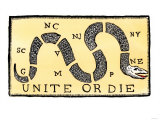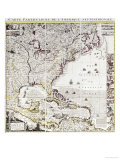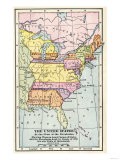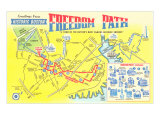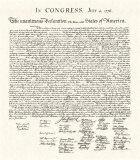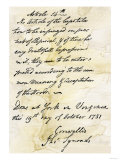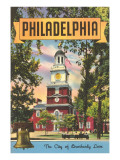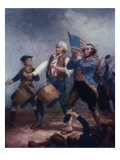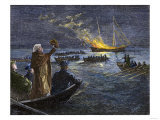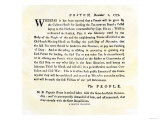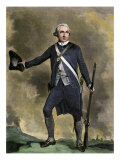|
|
|
|
|
|
|
|
|
|
|
|
BOOKS ABOUT THE AMERICAN REVOLUTION
|
|
|
|
|
|
|
|
|
|
|
|
|
|
|
|
 |
|
|
|
American Revolution Posters, Prints & Charts, pg 1/7
for social studies classrooms, history buffs and reenactors.
|
history > AMERICAN REVOLUTION POSTERS 1 | 2 | 3 | 4 | 5 | 6 | 7 < social studies
|
|
The American Revolution, a social and cultural shift of allegiance from aristocracy and monarchy to sovereignty of the citizens with a system of law and elected representatives (republicanism), began as struggle for justice and morality against the British Empire.
The Revolutionary War, also known as the American War of Independence, was fought between 1775-1783 primarily in eastern North America and at sea. The thirteen British colonies (Connecticut, Delaware, Georgia, Maryland, Massachusetts, New Hampshire, New Jersey, New York, North and South Carolina, Pennsylvania, Rhode Island, and Virginia), joined forces in declaring independence from Great Britain in 1776. The British recognized the independence of the United States of America, the territory bounded on the north by Canada, Florida to the south, and west to the Mississippi River, in the 1783 Treaty of Paris.
Benjamin Franklin first published his famous political cartoon in 1754. Orginally entitles “Join, or Die”, it was meant to bring the colonies together with the British to fight the French and their Indian allies for the land west of the Appalachian Mountains. The cartoon was resurrected in the lead up to the American Revolution to rally the colonies to unite against Britain.
|
|
|
|
|
|
|
|
|
|
|
|
The Boston Massacre of March 5, 1770, one of most important events that turned colonial sentiment against King George III, was the killing of five civilians by British soldiers.
The heavy British military presence in Boston, meant to inforce trade regulations established by Parliament, lead to increasingly violent confrontations. Near the end of February, 1770 a young boy named Christopher Snider (or Seider) was shot and killed by a customs employee; eventually, several weeks later, a situation erupted where troops discharging their muskets into a rioting crowd after being attacked.
The most remembered victim was Crispus Attucks, of African and Native American ancestry. In 1906 the Boston Chapter of the S.A.R. placed a marker at “The Remains of Samuel Gray, Samuel Maverick, James Caldwell, Crispus Attucks and Patrick Carr, Victims of the Boston Massacre ... were here interred by order of the Town of Boston. - Here also lies buried the body of Christopher Snider, aged 12 years, Killed February 22, 1770, the innocent first victim of the struggles between the Colonists and the Crown, which resulted in Independence.”
Patriot John Adams, and future second president of the United States, chose to defend the soldiers so they could get a fair trial and give no cause for a British retaliation, despite the unpopularity of such an act. - “Facts are stubborn things; and whatever may be our wishes, our inclinations, or the dictates of our passion, they cannot alter the state of facts and evidence.” 'Argument in Defense of the Soldiers in the Boston Massacre Trials,' December 1770
|
|
|
|
|
|
|

The Boston Tea Party
|
The Boston Tea Party was an incident on December 16, 1773, when colonists disguised as Indians dumped English tea into the Boston Harbor. (Did you know the WWII Battle of the Bulge started 171 years later?)
|
|
Handbill Warning Boston Patriots against Buying Tea, December 2, 1773
WHEREAS it has been beyond that a Permit will be given by the Custom-House, for Landing the Tea now on Board a Vessel laying in the Harbour, commanded by Capt. HALL : THIS is to remind the Publick, That it was solemnly voted by the Body of the People of this and the neighbouring Towns assembled at the Old-South Meeting-House on Tuesday the 30th Day of November, that the said Tea never should be landed in this Province, or pay one Farthing of Duty : And as the aiding or assisting in procuring or granting any such Permit for landing the said Tea or any other Tea so circumstanced, or in offering any Permit when obtained to the Master or Commander of the said Ship, or any other Ship in the same Situation, must betray an inhuman Thrist for Blood, and will also in a great Measure accelerate Confusion and Civil War : This is to assure such public Enemies of this Country, that they will be considered and treated as Wretches unworthy to live, and will be made te first Victims of our just Resentment.
• beverages posters
• more Massachusetts posters
|
|
|
|
The Battle of Lexington and Concord, fought on April 19, 1775, were the first military encounters in the American Revolutionary War.
The British Regulars, or Redcoats, marching to Concord to seize the stored militia supplies and arrest John Hancock and Samuel Adams, were surprised by the Minutemen, an elite selection of colonial militia trained to respond quickly.
The outlying militia, warned by Paul Revere, William Dawes and Dr. Samuel Prescott, forced the Regulars back Boston with significant casualities. The phrase ‘shot heard round the world’ was from Ralph Waldo Emerson's 1836 commemorative poem “Concord Hymn”. The Seige of Boston began the next day and lasted eleven months.
During the Seige of Boston, the colonial militia, later to become the Continental Army, surrounded the peninsular town of Boston to prevent the British occupiers from getting supplies and reinforcements.
On June 17, 1775 the British managed to win a battle for the high points of Bunker Hill and Breed's Hill, but at great loss of casualities and officers.
Abigail Adams, who was caring for the children of widower Dr. Joseph Warren at the time of the Battle of Bunker Hill, watched from a hill in Quincy the far-off flames of burning Charleston to the north. Dr. Warren was a private soldier and chief executive of the revolutionary massachusetts government, died that day.
FYI ~ Author Sarah Josepha Hale spearheaded the fundraising to finish the construction of the Bunker Hill Monument.
|
|
|
previous page | top | AMERICAN REVOLUTION POSTERS 1 | 2 | 3 | 4 | 5 | 6 | 7 | next
|
|
I have searched the web for visual, text, and manipulative curriculum support materials - teaching posters, art prints, maps, charts, calendars, books and educational toys featuring famous people, places and events - to help teachers optimize their valuable time and budget.
Browsing the subject areas at NetPosterWorks.com is a learning experience where educators can plan context rich environments while comparing prices, special discounts, framing options and shipping from educational resources.
Thank you for starting your search for inspirational, motivational, and educational posters and learning materials at NetPosterWorks.com. If you need help please contact us.
|
|
|









